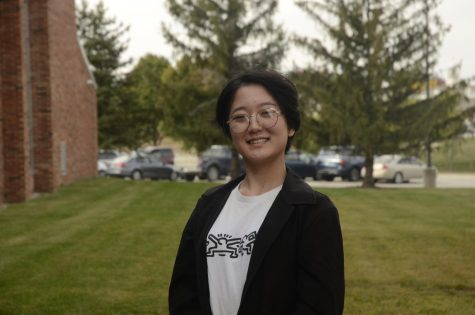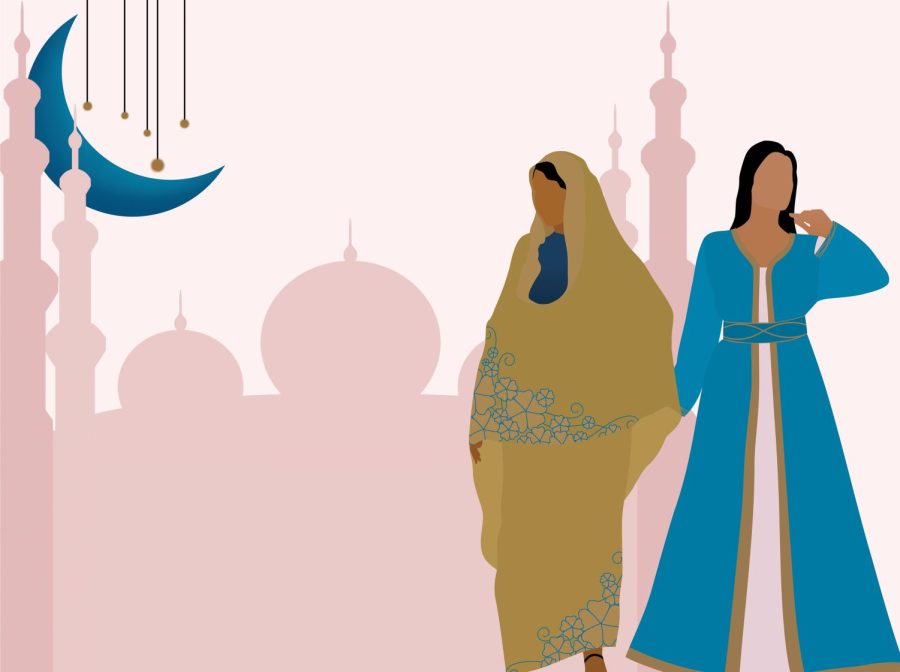A beginner’s guide to Arab culture
WSS Intern Reem Kirja ’25 explains Arab culture and contributions.
WSS Intern Reem Kirja ’25 explains Arab culture and contributions.
It’s a humid April morning, and sounds of people getting ready for the day engulf the atmosphere. I wake up around 7 a.m., drink a cup of milk tea and head out. Most people rush to school or work, thinking it’s an ordinary April morning. Others spend their time counting down the days to their upcoming AP exam. Little do they know, this is a special month for a particular group of people — April is Arab Culture and Heritage Month, a time to celebrate Arab culture and commemorate contributions by Arab people to the development of society.
The hearths of Arab culture are North Africa and the Middle East — two regions full of exotic spices and vast oil reserves. The Middle East is a vernacular region, so the countries included are typically debated among geographers. Now, Arab culture has spread beyond its origins, with Arabs inhabiting every continent.
Arab culture is an umbrella term used to describe the shared religion, language and ethnicity between Arabs in different countries. However, it’s important to note that practices in each area differ from one another. In most cases, the qualities of generosity, respect and loyalty are shared among the various regions. Although diversity is present in practiced religions, 93 percent of Arabs identify as Muslim. For that reason, Arab culture and Islam are closely intertwined, making it hard for outsiders to distinguish between them.
In many cultures and religions, food is considered important, and Arab culture is no different. Arabs believe that food brings people together. For example, during Ramadan, many families invite close comrades and prepare a food spread that includes staple dishes like falafel, ful meddamas and shawarma. Food is also incorporated into traditional gatherings, such as weddings, birthday parties and school celebrations.
Another important aspect of Arab culture is clothing style, which uniquely ties back to each country’s history. For example, Sudanese women who are elderly or married wear a toub, a long piece of decorated cloth wrapped around the body in a specific manner. Many women choose to wear the toub to represent their culture, but others opt for a more Western look. In Algeria, cultural clothing typically consists of differently styled dresses depending on the wealth of the individual. Like the Sudanese, Algerians alternate between Western and traditional clothing depending on the event.
Arab culture is an intricate and vast topic, but it barely gets talked about in the mainstream media and schools. Arabs have long been victims of underrepresentation. In the standard American education curriculum, Arab heroes are neither included nor talked about, but that doesn’t mean there aren’t any contributors from the ethnicity. To put this into perspective, printers and most electronic devices wouldn’t exist due to their use of algebra, a mathematical theory invented by Arabs. Muhammad ibn Mūsā al-Khwārizmī (780 CE – 850 CE) was a Muslim astronomer and mathematician who introduced the concept of algebra. Famous names, such as Albert Einstein and Johannes Gutenberg, inventor of the printing press, used al-Khwārizmī’s discoveries to achieve their work. Other notable Arab inventions include paper, ink, cosmetics, toothbrush and toothpaste, plumbing systems, and medical therapies such as cupping and acupuncture. Evidence of most of these inventions can be found in Egyptian records, ancient relics and the Quran. Many credit Arab inventions to the ancient Greeks or the Chinese, but in reality, these inventions were first made by Arabs and later improved by different ancient civilizations to a certain degree.
Misinformation about Arab culture affects Arab women in a particular way. The media and government propaganda typically portray Arab women as weak, oppressed or unintelligent. A consequence of these stereotypes is lack of employment and trust. For example, Muslim women are 65 percent less likely to be employed than Christian women in the United Kingdom. This leads to Muslim communities having economic disadvantages, such as lower-grade education and less access to services due to being classified as low-income. Additionally, hate crimes and racial profiling are currently at an all-time high, leading to unstable safety in primarily Muslim and Arab communities. Another effect of these stereotypes is the justification of “liberation” bills and government targeting, such as the hijab ban in France, which bans the wearing of any hijab type. As an Arab Muslim, my hijab is part of my identity, and the same goes for many other Muslim women. We don’t wear the hijab because we’re forced to — it’s a way to express our religion, culture and identity.
Even though Arabs significantly contribute to society every day, many still degrade them. The Middle East and North Africa are excellent examples of areas with cultural and geographic diversity. Nonetheless, most representation in the media is that of conflicts and civil wars. If the truth isn’t explicitly presented to us, we need to educate ourselves on it. As students, we don’t have a lot of power, but we can use resources available to educate ourselves and others. We can use the internet to advocate for Arab rights and to ask questions, such as what a hijab is and the similarities and differences between Arab culture and Islam. Recognizing Arab Culture and Heritage Month is the first step toward change. School districts and other administrations should do more to support Arabs, such as revising their education plans to include Arab history. Through proper representation of and education on Arabs, we will not only decrease rates of hate crimes and discrimination, but we’re opening the door for proper representation of other marginalized groups as well.
Your donation will support the student journalists of West High School. Your contribution will allow us to purchase Scholarship Yearbooks, newsroom equipment and cover our annual website hosting costs.

(She/her) Reem Kirja is the West Side Story print Profiles Editor and this is her second year on staff. She enjoys exploring different world issues and...

(she/they) Sachiko is a senior at West, and this will be their 3rd year on staff. She is a design editor and photographer for the print publication. In...



